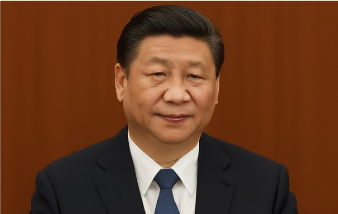
Chinese President Xi Jinping is set to undertake his first overseas visit of 2025, with scheduled stops in Vietnam, Malaysia, and Cambodia from April 14 to 18. This diplomatic tour comes at a pivotal time, as tensions rise between China and the United States following Washington’s imposition of steep tariffs—up to 145%—on Chinese imports. Xi’s journey to Southeast Asia appears to be a strategic response aimed at reinforcing regional partnerships and boosting China’s influence amid a shifting global trade landscape.
In Vietnam, President Xi’s visit is expected to deepen the long-standing comprehensive strategic partnership between the two nations. China continues to be Vietnam’s largest trading partner, with bilateral trade exceeding $175 billion in 2022. During the trip, the two sides are expected to sign around 40 cooperation agreements, covering sectors such as railway development, trade, and potentially defense collaboration. The visit also reflects China’s efforts to maintain strong ties with Vietnam despite occasional disputes in the South China Sea.
Following his Vietnam visit, Xi will travel to Malaysia to meet with Prime Minister Anwar Ibrahim. Malaysia currently holds the rotating ASEAN chairmanship for 2025, giving added significance to Xi’s stop in Kuala Lumpur. Discussions are expected to focus on economic cooperation, investment, and regional integration. Notably, Malaysia has taken a firm stance against the recent U.S. tariffs and has called for a unified ASEAN response. This aligns with China’s broader goal of strengthening regional solidarity in the face of rising protectionism.
President Xi’s final stop will be Cambodia, where he is expected to bolster what Beijing describes as an “ironclad” friendship. China and Cambodia have enjoyed strong bilateral ties, particularly under initiatives such as the “Industrial Development Corridor” and the “Fish and Rice Corridor,” which are designed to spur infrastructure growth and agricultural development. Xi’s visit will likely result in new agreements to enhance strategic cooperation and deepen people-to-people exchanges.
Overall, this Southeast Asia tour highlights China’s intent to solidify its regional alliances and economic partnerships amid increasing global uncertainty. By strengthening ties with key ASEAN nations, Xi aims to counterbalance external economic pressures and reaffirm China’s role as a central player in Asia’s future development.




